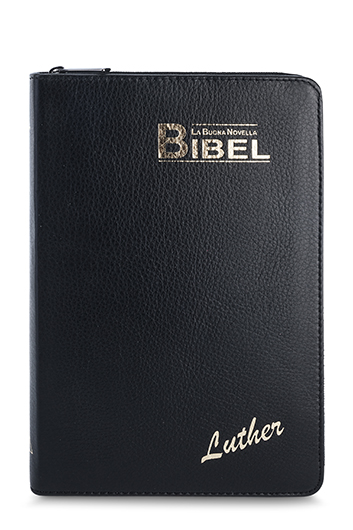
La Buona Novella Bibel 2017
Seit ihrem Erscheinen im Jahr 2009 erfreut sich die Ausgabe 2009 grosser Beliebtheit als Lesebibel, aber auch als F.C. Thompson Studienausgabe und als Studienbibel mit Konkordanz. Und doch erscheint uns die 500. Wiederkehr des Wittenberger Thesenanschlags durch Martin Luther so bedeutend, dass eine besondere Bibelausgabe aus diesem Anlass sinnvoll ist. Zumal es keine Lutherbibel mehr gibt, die auf dem Text von Erasmus von Rotterdam, dem «Textus Receptus», als Urtext basiert, den Luther und die anderen Reformatoren benutzten. Bei der erneuten Durchsicht des Textes 2009 wurden absichtlich einige Lutherausdrücke aus dem Text vom 1912 wieder übernommen. Hinweise neuerer Forschung und berechtigte Textänderungen wurden geprüft und ggf. berücksichtigt. So entstand diese Neuausgabe unter dem Titel La Buona Novella Bibel 2017.
Das Anliegen der Herausgeber bleibt die Verständlichkeit für heutige Leser. In einer immer komplexeren, globalisierten Welt ist deshalb das Reformationsjubiläum ein guter Anlass, die Bibel zu lesen und persönliche Orientierung und Hilfe für ein Leben im 21. Jahrhundert zu finden und möglicherweise eine «persönliche Reformation» zu erleben.
Link für die La Buona Novella Bibel
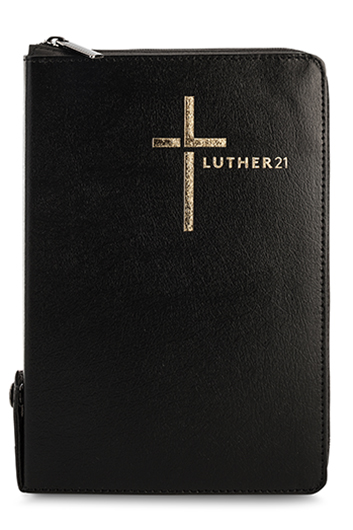
Luther21
Vielleicht fragen Sie sich, was diese Bibel von anderen unterscheidet? Warum es überhaupt einer weiteren Bibelausgabe bedarf?
Die erste Antwort ist: Weil gesprochene Sprache etwas Lebendiges ist, sich wandelt, und dadurch manche Wörter im Laufe von Jahren oder Jahrzehnten ihre Bedeutung verändern. Darum hat auch schon Martin Luther, als 1522 sein Neues Testament erschien, »dem Volk aufs Maul geschaut« und die Sprache seiner Zeit benutzt. Als 1534 erstmals die ganze Bibel in Deutsch gedruckt wurde, war es jedem, der lesen konnte, möglich, selbst das Wort Gottes in seiner Muttersprache lesen. Und viele lernten dann das Lesen mit Luthers Bibel! Seine kraftvolle Sprache prägte die Weiterentwicklung der deutschen Sprache, Bildung und Kultur. Luthers Prinzip der Verständlichkeit war der Maßstab bei der Anpassung des Textes an die heutige Sprache.
Ebenso wichtig ist ein zweiter Aspekt: Es entspricht dem Wunsch vieler Christen, die Bibel auch im 21. Jahrhundert auf der Grundlage des ursprünglichen Textes zu lesen, den auch die Reformatoren benutzten. In zeitgemäßer, verständlicher Sprache, aber doch so nah am Urtext wie möglich. Der Textus Receptus war die Grundlage für die Lutherbibel im deutschsprachigen Raum bis 1912, ebenso wie für die King James Bibel im angelsächsischen Sprachraum. Im ausgehenden 19. und beginnenden 20. Jahrhundert wurde dann aufgrund von theologischen, sprachwissenschaftlichen oder textkritischen Forschungen der ursprüngliche Text infrage gestellt und manche Bibelausgaben diesen Forschungsergebnissen entsprechend angepasst.
Die Luther21 ist die momentan aktuellste Überarbeitung vom Verlag La Buona Novella. Der Text wurde nochmals sprachlich überarbeitet, das Layout und Logo sind neu.
Link für die Luther21
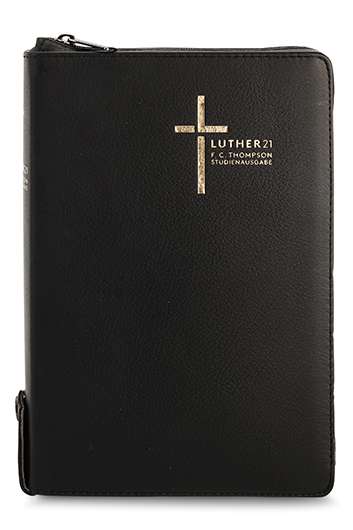
Luther21 F. C. Thompson Studienausgabe
Die neuste Ausgabe der F. C. Thompson Studienausgabe von La Buona Novella beinhaltet den überarbeiteten Text von Luther21. Sie ist für jeden Bibelleser geeignet, der sich gerne vertiefter mit den Inhalten der Bibel auseinandersetzt. Der Aufbau der Bibel ist übersichtlicher gestaltet, in einem handlichen Format eingefasst und somit für jeden praktisch nutzbar.
Es wurden noch mehr Thementafeln aufgeführt und die Einträge in der Konkordanz auf ca. 40’000 erweitert. Neu gibt es auch ein Verzeichnis von biblischen Namen und deren Bedeutung. Die deutsche Studienausgabe enthält zudem einzigartige chronologische Zeittafeln, die es nur bei La Buona Novella gibt.
Link für die Luther21 F. C. Thompson Studienausgabe
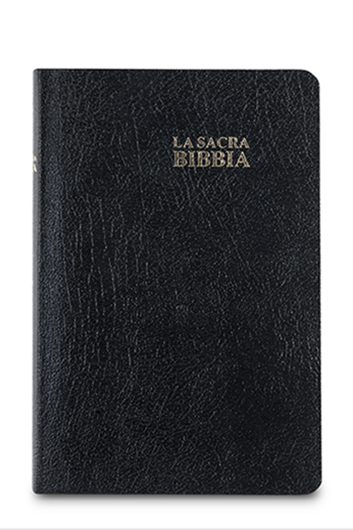
Nuova Diodati 91/03
Questa revisione della Bibbia in lingua italiana è il risultato di un grande desiderio e determinazione di offrire ai credenti, e a chiunque è assetato di verità, uno strumento valido e affidabile per la lettura e studio della Parola di Dio. Questa revisione dovrebbe essere ancora più utile e importante per coloro che sono impegnati in un ministero.
I criteri che hanno guidato questo lavoro di revisione sono:
1. La maggior fedeltà possibile ai testi, nell› originale greco per il Nuovo Testamento e nell› ebraico per l› Antico Testamento.
2. Chiarezza e correttezza nella lingua italiana, nella quale si è cercato di evitare termini arcaici, difficili, ambigui e oscuri.
Per le suddette ragioni sono state messe in corsivo tutte le espressioni, parole, articoli e proposizioni non contenute nel testo originale greco ed ebraico, ma ritenute uti-li per rendere più chiaro ed esplicito il significato del testo.
A questo proposito ci teniamo a precisare che tutti i titoli in grassetto dei capitoli o frazioni di capitolo e dei Salmi stessi, tanto nell› Antico che nel Nuovo Testamento, non sono contenuti nel testo originale ebraico e greco, ma sono aggiunti e hanno lo scopo di indicare il soggetto o il contenuto, sovente in modo selettivo e non esauriente, dei vari capitoli o frazioni di capitolo.
Inoltre per facilitare il controllo di passi paralleli si é pensato bene di mettere i vari riferimenti subito dopo il versetto (vedi pagina esplicativa pg. IX).
Il testo usato è il «Textus Receptus», quello sostanzialmente seguito dal Dr. Giovanni Diodati e in seguito pure dai traduttori della «King James Version», la versione della Bibbia che ha avuto maggior uso e diffusione nel mondo inglese.
I nomi di «Dio» e «Iddio» nella Diodati sono usati alternativamente più per ragioni di assonanza che per ragioni inerenti al testo originale. Abbiamo perciò ritenuto opportuno adottare un criterio di maggiore chiarezza tanto per l› Antico che per il Nuovo Testamento. In questo modo, ogni volta che in italiano viene usato un nome di Dio, è perché vi è una corrispondenza di un particolare nome di Dio tanto nel testo ebraico che greco.
Così per l› Antico Testamento abbiamo usato i seguenti nomi:
– Dio, che rende il termine ebraico Elohîm.
– Dio rende invece i termini ebraice Elôah, Êl e Êlahh (aramaico, in Esdra e in Daniele).
– Eterno rende i termini ebraici Yahweh (o Jehôvih, Jehôvâh) o Yah.
– Signore rende il termine ebraico Adônâi, che letteralmente significa mio Signore.
Per il Nuovo Testamento i nomi più importanti di Dio sono tre:
– Dio che rende il termine greco Theos.
– Signore rende il termine greco Kurios.
– Gesú rende il termine greco Iesous, che letteralemente significa Yahweh (o Jehôvâh) o Dio salva.
Link per la Nuova Diodati 91/03
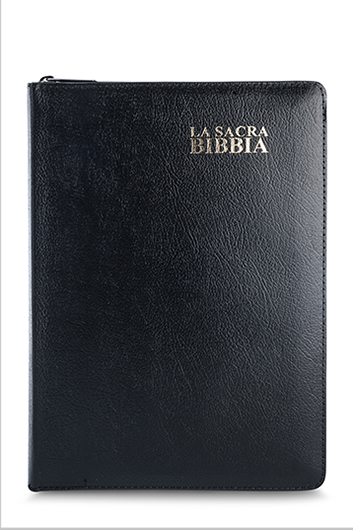
Nuova Diodati 91/03 Thompson
Più di un secolo fa, intorno al 1890, un povero predicatore della zona di New York cominciò a scrivere delle note agli ampi margini della sua Bibbia. Lui credeva che la Scrittura dovesse interpretare se stessa, così spese più di quarant› anni collegando versi che si riferivano a topici che erano oggetto della sua predicazione, quali: Speranza, L’amore di Dio.
Alcuni membri della sua chiesa videro ciò che lui aveva annotato nella sua Bibbia e ne rimasero affascinati. Essi spesero ore seguendo la catena dei versi riferiti ad un topico. Alla fine, nel 1908, i membri della chiesa decisero di stampare le note che il predicatore aveva scritto su quella Bibbia ormai logorata.
Il nome del predicatore era Dr. Thompson e la Bibbia venne chiamata Chain-Reference Bible (che significa: Bibbia con catena di riferimenti).
Così, dal 1908, sepre più persone hanno scoperto da se stesse la profondità della catena di riferimenti e delle note del Dr. Thompson, tanto che la Bibbia divenne nota come La Thompson Chain-reference Bibbia da Studio (The Thompson Chain-Reference Study Bible).
Per primo, B. B. Kirkbride, un venditore ambulante di Bibbie, attraversò le regioni rurali sul suo cavallo, al quale era legata una carrozza, consegnando le Bibbie da studio Thompson fatte a mano e che avevano una copertina in pelle. Nel 1915, lui impiegò una segretaria e prese in affitto un ufficio con una sola stanza nella città di Indianapolis. Tutto questo, per cercare di far fonte alle richieste che riceveva.
La Bibbia da Studio La Nuova Diodati Thompson contiene la catena die riferimenti che il Dr. Thompson scrisse ai margini della sua Bibbia più di un secolo fa. Queste sono state ristrutturate per rendere più semplice la consultazione dei versi di un topico.
Noi abbiamo inserito delle intressanti note su scoperte archeologiche vicino ai passi biblici di attinenza. Abbiamo anche compilato, per ogni libro della Bibbia, una pagina introduttiva che riporta alcuni approfondimenti del Dr. Thompson. In altre parole, abbiamo preso gli approfondimenti chiave del Dr. Thompson, contenuti nella Thompson Chain-reference Study Bible, e li abbiamo presentati in un formato nuovo e facile da consultare.
Link per la Nuova Diodati 91/03 Thompson

